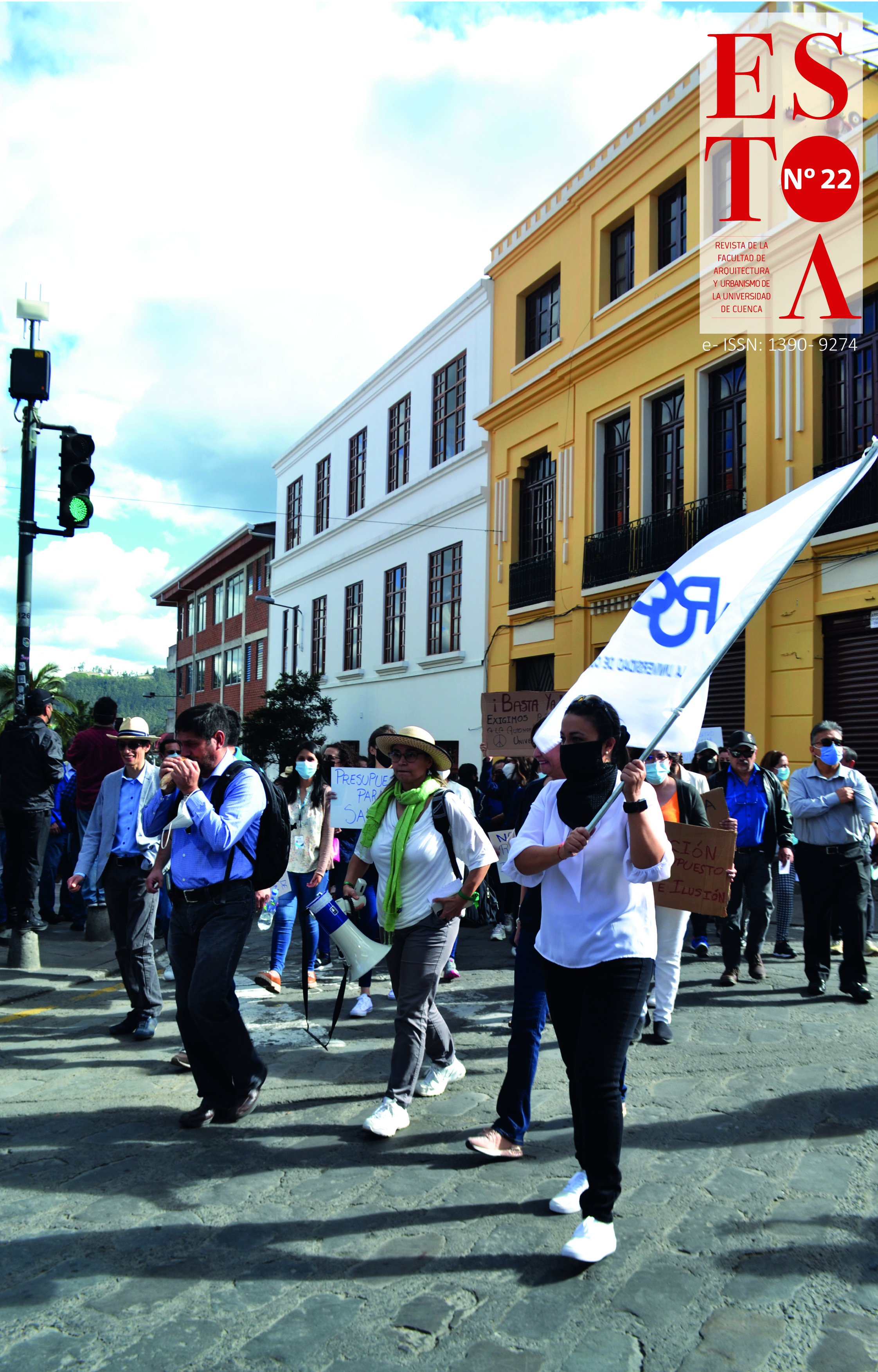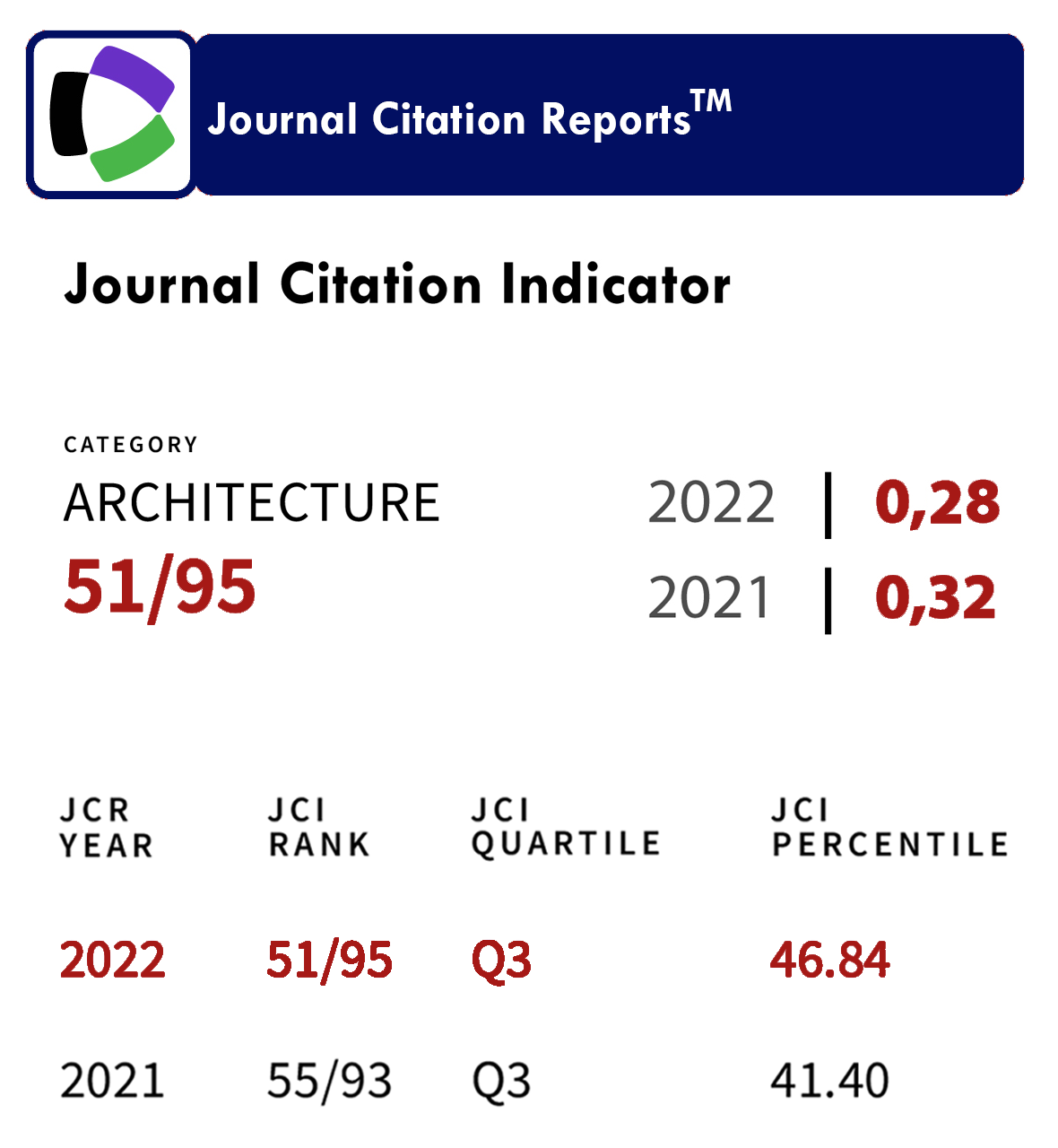Practiced, Conceived and Lived space in the Postdigital City
DOI:
https://doi.org/10.18537/est.v011.n022.a04Keywords:
postdigital, new urbanism, ubiquitous computing, Lefebvre, digital artAbstract
The pandemic has highlighted the fast transmission of needs, goods and ideas that sustain the functionality of our globalised, networked world. At the same time, it has highlighted the resilience and unbreakability of this network when transporting undesirable events such as fake news or a virus. Henceforth, this situation has forced us to rethink how we plan our inhabited space. Since the inception of ubiquitous computing, the city has mutated under a new technologically mediated functionalism, overlaid by the platforms of a global and highly relational system that is submitting space to the logic of computing. Fruit of previous doctoral research, this article reviews the transformations leading to the constitution of this technologically mediated urban space and analyses them by applying Lefebvre’s Unitarian Theory of Space. The objective is to unveil the challenges of the postdigital urban space and present projects that point towards alternative possibilities for urban planning.
Downloads
References
Aguilar, R. P. (2002). La brecha digital: situación regional y perspectivas. Estudios Internacionales, 35(138), 55–70.
http://www.jstor.org/stable/41391699
Álvaro, S. (2016). Postdigital city: aesthetics and politics in the space of embodied virtuality [Doctoral Thesis, Universitat Autònoma de Barcelona]. https://www.tdx.cat/handle/10803/400208#page=1
Álvaro, S. (2018). La esfera pública en la era de la hipermediación algorítmica: noticias falsas, desinformación y la mercantilización de la conducta. Hipertext.net (17), 74-82. https://doi.org/10.31009/hipertext.net.2018.i17.07
Amin, A., & Thrift, N. (2016). Seeing Like a City. Polity.
Ávila Pinto, R. (2018). ¿Soberanía Digital o Colonialismo Digital? SUR 27, 15(27), 15-28.
Batty, M. (1997). The computable city. International Planning Studies, 2(2), 155-173.
Batty, M. (2013). The New Science of Cities. MIT Press.
Batty, M. (2020). The Coronavirus crisis: What will the post-pandemic city look like? EPB: Urban Analytics and City Science, 47(4), 547-552.
Berry, D. (2015). The Postdigital Constellation. Berry, D. & Dieter, M. (Eds.) Postdigital Aesthetics. Art, Computation and Design (pp. 44-57). Palgrave, McMillan.
Bishop, R., Gansing, K., Parikka, J. & Wilk, E. (Eds.) (2017). Accross & Beyond. A transmediale reader on post-digital practices, concepts and institutions. Sternberg Press and Transmediale e.V.
Bratton, B. (2016). The Stack. On Software and Sovereignty. MIT Press.
Clarke, R., Heitlinger, S., Light, A., Forlano, L., Foth, M., & DiSalvo, C. (2019) More-than-human participation: design for sustainable smart city futures, Interactions, 26(3), 60-63
Cueto García, C. (2 de septiembre de 2020). Nadia Calviño: "El COVID-19 ha acelerado la digitalización de España”. Computerworld, IDG. https://www.computerworld.es/ia/calvino-la-digitalizacion-se-debe-desarrollar-de-manera-inclusiva-sostenible-y-con-las-personas-en-el-centro
De Lange, M., de Waal, M. (Ed.) (2019). The Hackable City Digital Media and Collaborative City-Making in the Network Society. Springer.
Deleuze, G. & Guattari, F. (2005). A thousand plateaus. Capitalism and schizophrenia. University of Minnesota Press.
Dijck, J., Poell, T., & de Waal, M. (2018). The Platform Society Public Values in a Connective World, Oxford University Press.
Foth, M. (2009). Handbook of Research on Urban Informatics: The Practice and Promise of the Real-time City. Information Science Reference.
Glas, R., Lammes, S., de Lange, M., Raessens, J., & de Vries, I. (Ed.) (2019). The Playful Citizen. Civic Engagement in a Mediatized Culture. Amsterdam University Pres.
Graham, S. (2005). Software-sorted geographies. Progress in Human Geography, 29(5), 562–580.
Greenfield, A. (2006). Everyware. The dawning age of ubiquitous computing. New Riders.
Grusin, R. (2015). Radical Mediation. Critical Inquiry 42 (Autumn 2015), 124-148
Haraway, D. (2016). Staying with the Trouble. Making Kin in the Chlthulucene. Duke University Press.
Hollands, R.G. (2016). Beyond the corporate smart city. Glimpses of other possibilities of smartness. In S. Marvin, A. Luque-Ayala & C. McFralane. (Eds.) Smart Urbanism. Utopian Vision or False Dawn? (pp. 168-185). Routledge.
Houston, D., Hillier, J., MacCallum, D., Steele, W. & Byrne, J. (2018). Make kin, not cities! Multispecies entanglements and 'becoming-world' in planning theory. Planning Theory, 17(2), 190-212.
Jaffe E. (Ed.) (2019). MIDP. Sidewalk Labs LLC.
Kitchin, R., Lauriault, T. & McArdle, G. (2016). Smart Cities and the politics of urban data. In S. Marvin, A. Luque-Ayala & C. McFralane. (Eds.) Smart Urbanism. Utopian Vision or False Dawn? (pp. 26-34). Routledge.
Kitchin, R. (2017). Urban Science: A Short Primer. The Programmable City Working Paper 23. https://osf.io/preprints/socarxiv/sdsu2
Klauser, F. R. & Söderström, O. (2016). Smart city initiatives and the Foucauldian logics of governing through code. In S. Marvin, A. Luque-Ayala & C. McFralane. (Eds.) Smart Urbanism. Utopian Vision or False Dawn? (pp. 108-125). Routledge.
Latour, B. (1993). We have never been modern. Harvard University Press.
Latour, B. & Yaneva, A (2008). Donnez-moi un fusil et je ferai bouger tous les batiments. Le point de vue d’une fourmi sur l’architecture. In G. Reto (Ed). Explorations in Architecture : Teaching, Design, Research (pp. 80-89). Birkhäuser
Latour, B., November, V. & Camacho-Hubner, E. (2010). Entering a risky territory. Space in the age of digital navigation. Environment and planning D: Society and Space, 28(4), 581-599. https://doi.org/10.1068/d10409
Lefebvre, H. (2000). La production de l’espace. Anthropos.
Lefebvre, H. (2000b). Right to the City. In Kofman, E. & Lebas, E. (Eds.) Writing on Cities. Henri Lefebvre (pp. 63-183). Blackwell.
Loh, S., Foth, M., Caldwell, G., Garcia-Hansen, V. & Thomson, M. (2020). A more-than-human perspective on understanding the performance of the built environment. Architectural Science Review, 63(3-4), 372-383.
Lynch, K. (1960). The Image of the city. MIT Press.
Nyhan, M., Grauwin, S., Britter, R., Misstear, B., McNabola, A., Laden, F., Barrett, S. & Ratti, C. (2016). 'Exposure Track'-The Impact of Mobile–Device- Based Mobility Patterns on Quantifying Population Exposure to Air Pollution. Environmental Science & Technology, 50(17), 1-34.
Ostfeld, R. S. (2017). Biodiversity loss and the ecology of infectious disease. The Lancet Planetary Health, 1(1), e2-e3. https://doi.org/10.1016/S2542-5196(17)30010-4
Parisi, L. (2013). Contagious Architecture. Computation, Aesthetics and Space. MIT Press.
Rati, C., Frenchman, D., Pulselli, R. & Williams, S. (2006). Mobile Landscapes: using location data from cell phones for urban analysis. Environment and Planning B: Urban Analytics and City Science, 33(5), 727-748. https://doi.org/10.1068/b32047
Söderström, O., Paasche, T. & Klauser, F. (2014). smart cities as corporate storytelling. City, 18(3), 307–320. https://doi.org/10.1080/13604813.2014.906716
Srnicek, N. (2016). Platform Capitalism. Polity.
Thacker, E. (2005). The Global Genome. Biotechnology, Politics and Culture. MIT press.
Thrift, N., & French, S. (2002). The automatic production of space. Transactions of the Institute of British Geographers, 27(3), 309-335.
Zuboff, S. (2008). The Age of Surveillance Capitalism. The Fight for a Human Future at the New Frontier of Power. Public Affairs
Weiser, M. (1991). The Computer for the 21st century, Scientific American, 94-100.
Published
How to Cite
Issue
Section
License
Copyright (c) 2022 Estoa. Revista de la Facultad de Arquitectura y Urbanismo

This work is licensed under a Creative Commons Attribution-NonCommercial-ShareAlike 4.0 International License.
The Journal declines any responsibility for possible conflicts derived from the authorship of the works that are published in it.
The University of Cuenca in Ecuador conserves the patrimonial rights (copyright) of the published works and will favor the reuse of the same ones, these can be: copy, use, diffuse, transmit and expose publicly.
Unless otherwise indicated, all contents of the electronic edition are distributed under a Creative Commons Attribution-NonCommercial-ShareAlike 4.0 International License.






